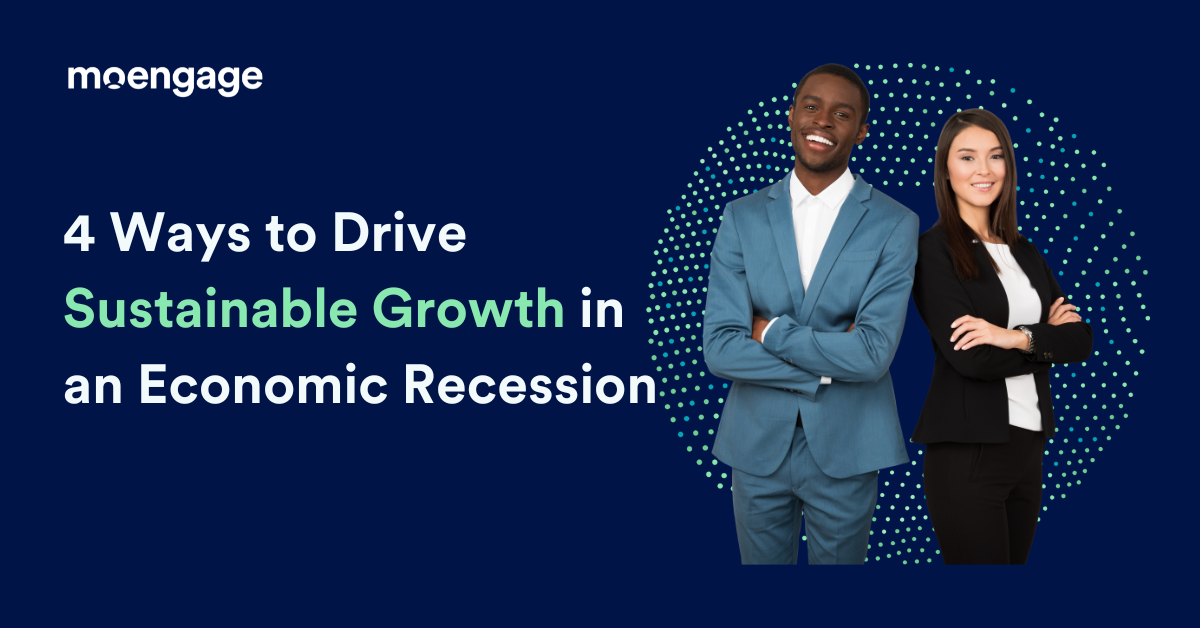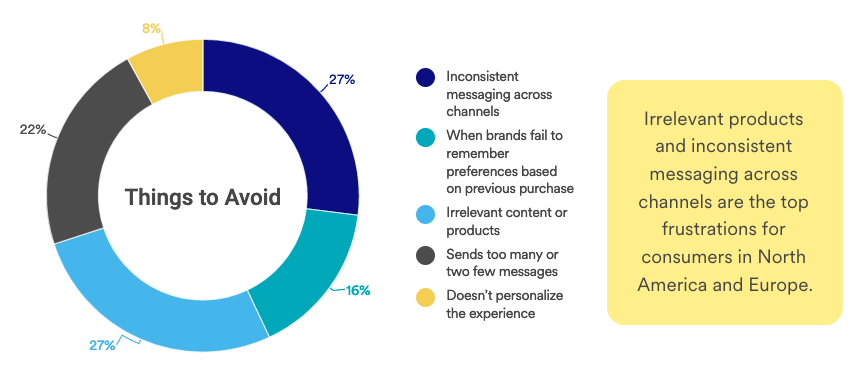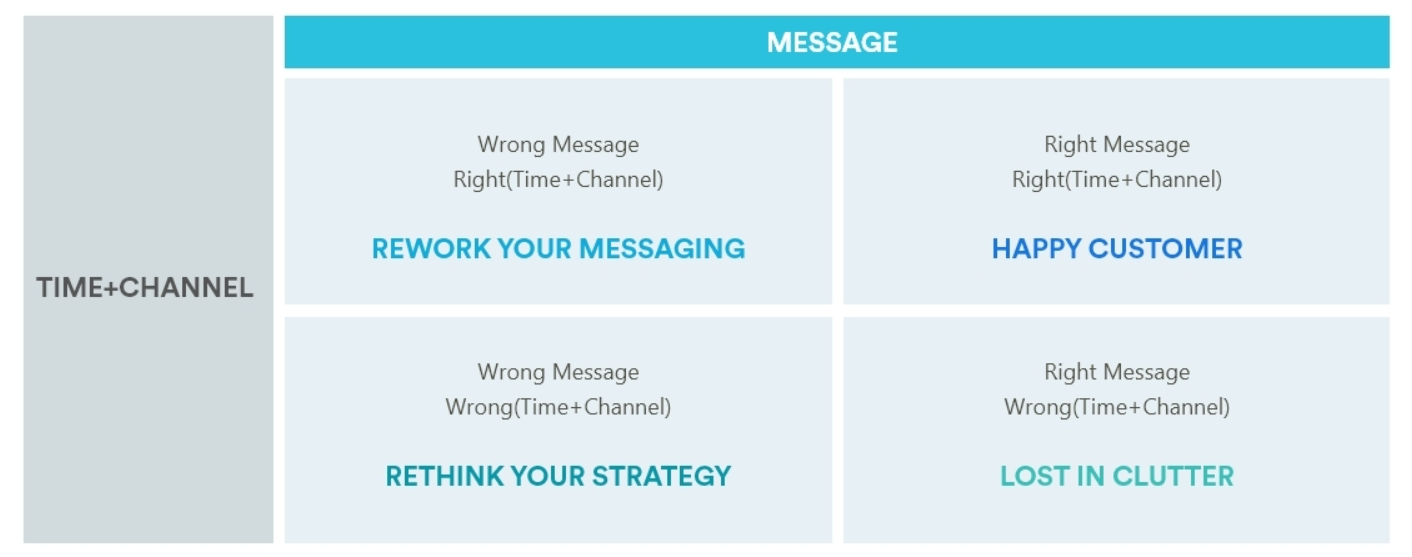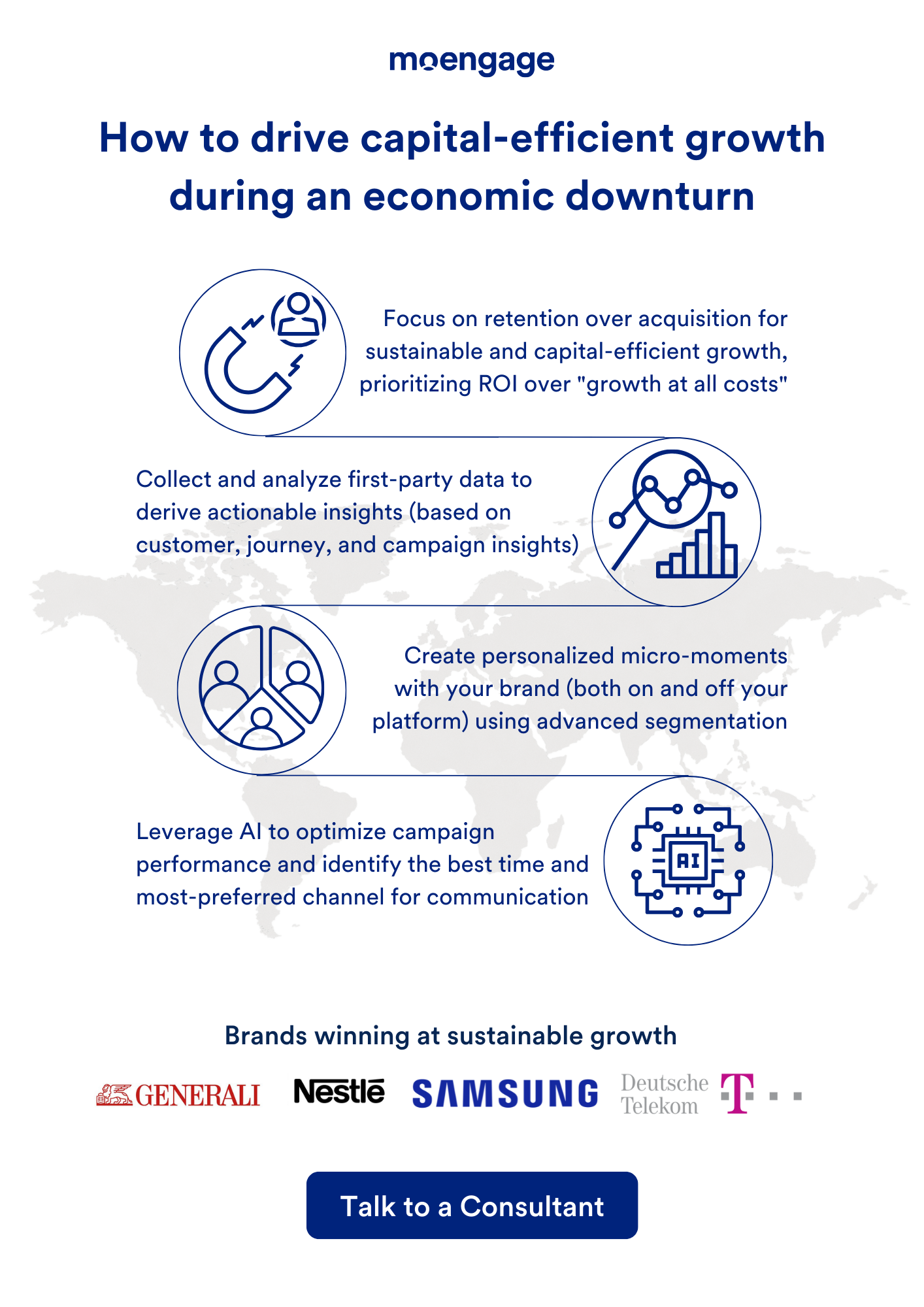How to Drive Capital-efficient and Sustainable Growth in an Economic Downturn

Reading Time: 4 minutes
With higher-than-expected inflation, global financial conditions have become tighter in 2022. Inflation is predicted to reach 6.6% and 9.5% in advanced and emerging markets respectively. According to the United Nations, these figures are projected to remain on the higher end for a longer duration.
The recent turmoil in the public and private markets has made it evident that businesses cannot thrive without capital-efficient and sustainable growth. Here are four strategies that CXOs need to implement today:
1. Move over Acquisition, Retention is the name of the game
“Growth at all costs” is not a viable option for brands that want to achieve sustainable growth. By investing resources in engaging and retaining already acquired customers, brands can drive higher LTV and grow revenue in a predictable fashion, even during spurs of economic downturn.
The most efficient way of driving customer retention is to increase the number of active sessions per customer.
According to MoEngage’s app retention report, as the number of active sessions increases, the retention rate increases proportionally. After two active sessions, customer retention rates increase drastically.
To ensure your customers are actively coming back to your mobile app or website after their first session, you need to make a strong first impression. This means your customer onboarding experience should be as personalized and relevant as possible.
2. First-party data holds the key to your success
Third-party cookies are a threat to privacy, are invasive, and lack transparency. No wonder they’re dying, right?
What is the difference between first-party data and third-party data?First-party data is information that you collect from your customer directly via your own channels. For example, product browsing history on your mobile app or website. Third-party data is information that is collected by another entity that is separate from you and your relationship with your customers. For example, an advertiser or social media company placing a cookie on your website to track your customer’s behavior. |
First-party data is more reliable than third-party data when your goal is to retain customers and increase LTV. Here are a couple of awesome things you can do with first-party data:
Recommend relevant products during checkout to increase AOV
Based on the purchase behavior of different customer segments, you can create a pool of products that are most commonly added to the same cart. This information can be used to create “Recommended Product” sections during the checkout process, helping you increase the average order value (AOV) and drive upsells.
Get deeper insights into customer preferences
First-party data will help you understand what your customers like, what they’re interested in, when they wish to receive communication from your brand, when they’re most likely to be active, and more. The accuracy of insights on customer affinity, channel preferences, the best time to communicate, and behavioral trends will determine the ROI of your engagement, retention, and monetization activities.
3. Personalized micro-moments will determine your growth trajectory
Nothing displeases consumers more than irrelevant messages. Sending an irrelevant message will harm your relationship with your customers more than sending no communication at all.

The key to creating relevant and personalized micro-moments is looking at the right insights. Gathering the following insights will help you engage and retain your customers:
- Purchase behavior
- Browsing behavior
- Geolocation
- Preferred language
- Preferred communication channel
- The most active time of the day and day of the week
- Recency, Frequency, and Monetisation behavior
4. Adoption of AI will let you optimize quickly and accurately
AI is the answer to the three Ws of customer engagement:
- Who: The customer cohorts that need to be engaged or retained
- What: The kind of communication that has to be sent to each cohort
- When: The best time to send this communication and on which digital channel
Using Machine Learning to identify customer cohorts
Brands have to start leveraging AI and machine learning to gather insights and predict customer behavior. You can proactively identify customers who are likely to make a purchase or are at risk of churn. Based on these insights, you can create targeted campaigns to grow revenue, and engage and retain them.
Leveraging AI to determine the right communication
Messaging is crucial to building relevant experiences for customers on and off your platforms. A message typically has three key components:
- Text (email subject lines, push notification text, etc),
- Media (image, video, gif, etc)
- Call to action
Brands need to invest in AI to optimize messaging with rigorous A/B and multivariate testing automatically. You can test campaigns and measure the impact on key metrics like revenue or active users. AI can then help you can compare results of A/B and multivariate testing with a ‘control group’ and pick the most optimized variation.
Investing in AI to optimize time and channels of communication
Timing and communication channel is everything when it comes to delivering messages to your customers. During times of economic slowdown, brands must utilize AI to understand customer preferences and automatically pick the best time and channel for the highest ROI.

The growing need for capital-efficient growth for modern consumer brands
Owing to the economic downturn in 2022, boardroom discussions today revolve around how to achieve capital-efficient growth, sustainable growth, and efficient EBIDTA margins.
It is evident that customer-centricity is the need of the hour.
The gap between brands that thrive during this economic downturn and those that don’t, can be reduced by adopting the right customer engagement and retention strategies. Brands need to start looking at active users, converting free to paid customers, improving average order value, reducing churn, and optimizing LTV.
If you’re looking for ways to achieve sustainable growth this economic recession, talk to our growth experts today!















